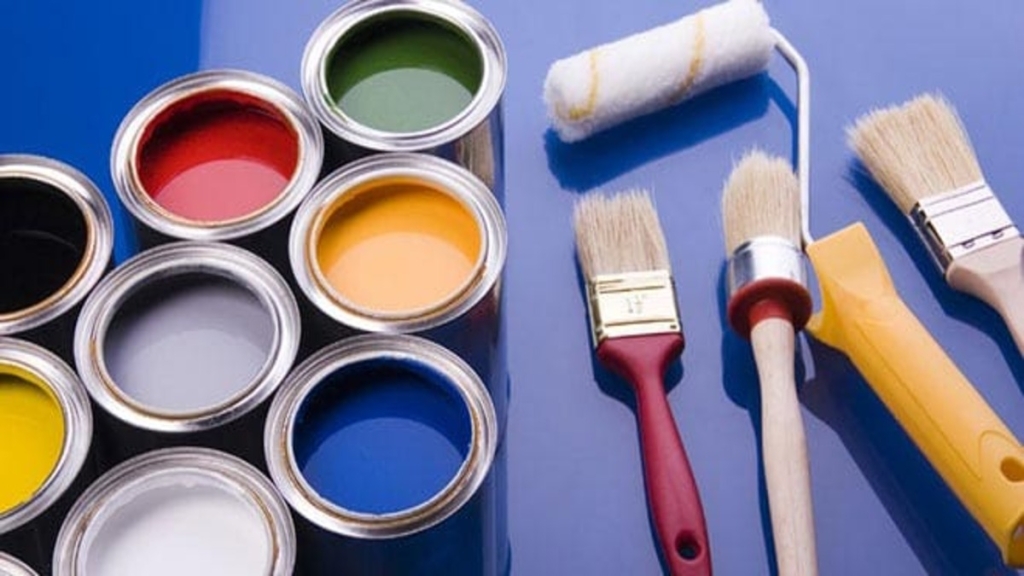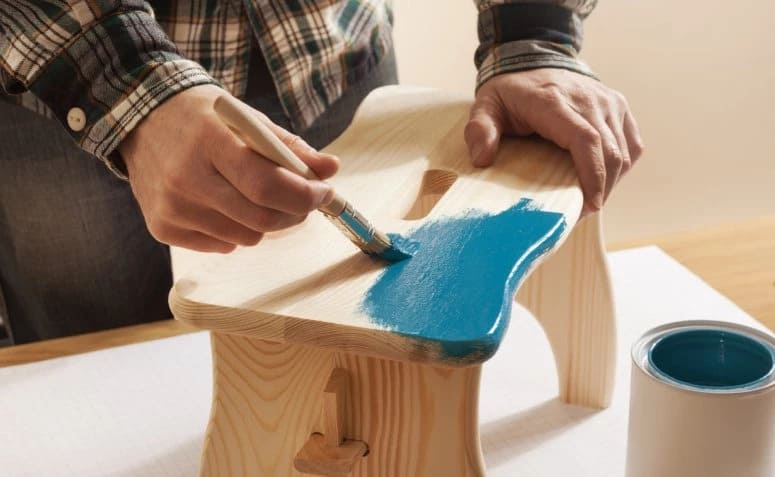THE wood paint It can be the key to breathing new life into an old piece of furniture or adding a splash of color to your decor. Whether you’re revitalizing a piece of weathered wood or adding your own personal touch to a DIY project, choosing the right paint can make all the difference. In this article, I’ll share everything you need to know about wood paint, from choosing the right product to applying it and maintaining it.
Exploring the Different Types of Wood Stain
Latex Paint: A Versatile Choice for Interiors
Latex paint is a popular water-based option for indoor use, and is known for its quick drying and easy cleaning. Ideal for projects that do not require high durability, such as furniture and interior decoration pieces, it may not be the best choice for environments with high humidity.

Nail Polish: The Fortress Against Adverse Conditions
For wood projects that require strength and durability, enamel paint is the perfect choice. Available in oil or water-based (synthetic enamel), it provides dense coverage, withstanding the most rigorous conditions. It is ideal for exteriors or areas subject to wear and tear and inclement weather.
Stain: Accentuating the Natural Beauty of Wood
Stain is ideal for projects where the natural appearance of the wood is valued. It penetrates the wood, highlighting its texture and grain. It is especially useful on outdoor structures, such as decks and garden furniture, protecting against moisture and sun exposure without hiding the natural beauty of the wood.
Acrylic Paint: Durability for Interiors and Exteriors
Acrylic paint offers excellent adhesion and durability, and is resistant to cracking, peeling and fading. It is a great option for wooden furniture and objects exposed both indoors and outdoors.
Oil-Based Paint: Tradition and Resistance
A tinta à base de óleo é conhecida por sua durabilidade e qualidade de cobertura. Ideal para portas externas, armários de cozinha e pisos de madeira, possui um cheiro mais forte e requer mais tempo de secagem. A limpeza requer solventes, o que pode ser uma desvantagem.
Spray Paint: Practicality for Detailed Projects
Spray paint is a practical solution for projects with intricate details or areas that are difficult to reach with a brush or roller. It offers uniform coverage, but requires care in application to avoid overspray and smudging.
Tips and Tricks for Painting Wood

Preparation is Key
Before you begin painting, it’s crucial to properly prepare the wood surface. This includes cleaning, sanding to remove old paint or imperfections, and applying a primer to ensure the paint adheres.
Brush Choice

Depending on the type of paint and the project, choose the appropriate brush or roller. Natural bristle brushes are best for oil-based paints, while synthetic bristle brushes are ideal for water-based paints.
Sealing
After painting, sealing the wood is essential to protect the paint and extend the life of the project. Sealers can be oil- or water-based, chosen according to the type of paint used.
Simplified Guide: Transforming Wood with Paint

What You Need
Prepare your arsenal of tools: medium (120-180) and fine (220-320) sandpaper, damp cloth, wood stain, brush or roller, paint tray, masking tape (optional) and a cover to protect the environment.
Preparing the Surface
Clean the surface thoroughly with a damp cloth. If the wood is painted or varnished, remove this layer with medium-grade sandpaper. Sand again with fine-grade sandpaper to obtain a smooth finish, always in the direction of the wood grain. Remove dust with a damp cloth and wait for it to dry completely.
Protecting the Environment
Use masking tape to protect nearby areas and spread plastic or newspapers on the floor to prevent paint stains.
Paint Application
Choose the right paint and follow the manufacturer's instructions. Dip the brush in the paint, remove the excess and apply it to the wood, following the direction of the grain. If you choose to use a roller, dip it into the paint tray, remove the excess and apply it to the wood using even strokes.
Drying and Finishing
After the final coat of paint, let the wood dry completely. Check to see if any touch-ups are needed after it dries.
Advanced Tips for a Perfect Finish

Test the Color Before Painting
Sempre faça um teste de cor em uma pequena área da madeira para garantir que o resultado final será o desejado. As cores podem variar de acordo com a luz e o tipo de madeira.
Use Creative Painting Techniques
Try techniques like distressing, ombré painting, or stenciling to add a special touch to your project. These techniques can transform a simple painting project into a statement piece.
Keep a Clean Work Environment
A clean and organized work environment makes the painting process easier and helps prevent accidents. Always have rags and solvents on hand to clean up any paint spills.
Correct Storage of Materials
Store paints, brushes and rollers properly after use to prolong their lifespan. Brushes and rollers should be thoroughly washed and stored in a dry place, while paint cans should be tightly closed and stored in a cool place.
Conclusion
Painting wood is a fun activity that can completely transform the look of furniture and other objects. With the right paint, the right tools, and a little patience, you can achieve professional results. Remember to prepare the surface well, choose the right paint for your project, and follow best practices for application and sealing.
Frequently Asked Questions
How to Choose Wood Paint?
It depends on the project. For interiors, latex paint is a good choice. For exteriors or areas that require durability, opt for enamel or oil-based paint.
What is the Best Paint for Outdoor Furniture?
Enamel or stain are the best options, as they offer weather resistance.
Is It Necessary to Apply Primer Before Painting?
Yes, the primer ensures better paint adhesion and a longer-lasting finish.
How to Clean Your Brush After Painting?
Brushes used with water-based paints can be cleaned with soap and water. For oil-based paints, use suitable solvents.
How Long Does It Take for Paint to Dry?
It depends on the paint. Water-based paints generally dry faster than oil-based paints. Consult the manufacturer's instructions.
Do I Need to Sand the Wood Before Painting?
Yes, sanding removes imperfections and helps paint adhere.
Can I Use Spray Paint on Any Project?
Spray paint is ideal for detailed projects or hard-to-reach areas, but it takes practice to apply evenly.
How to Avoid Paint Drips?
Don't overload your brush or roller with too much paint. Apply thin, even coats.
Should I Seal Wood After Painting?
Yes, sealing the wood protects the paint and increases the durability of the finish.
What is the Best Time to Paint Exterior Wood?
Avoid rainy or very humid days. Choose dry days with mild temperatures.
Did you like this amazing tip? If so, share it with your friends and on your social networks. Leave your comment below and your suggestions. Receive it daily here on our website. Blog of ideas and tips free and follow us on Google News too. Thank you!